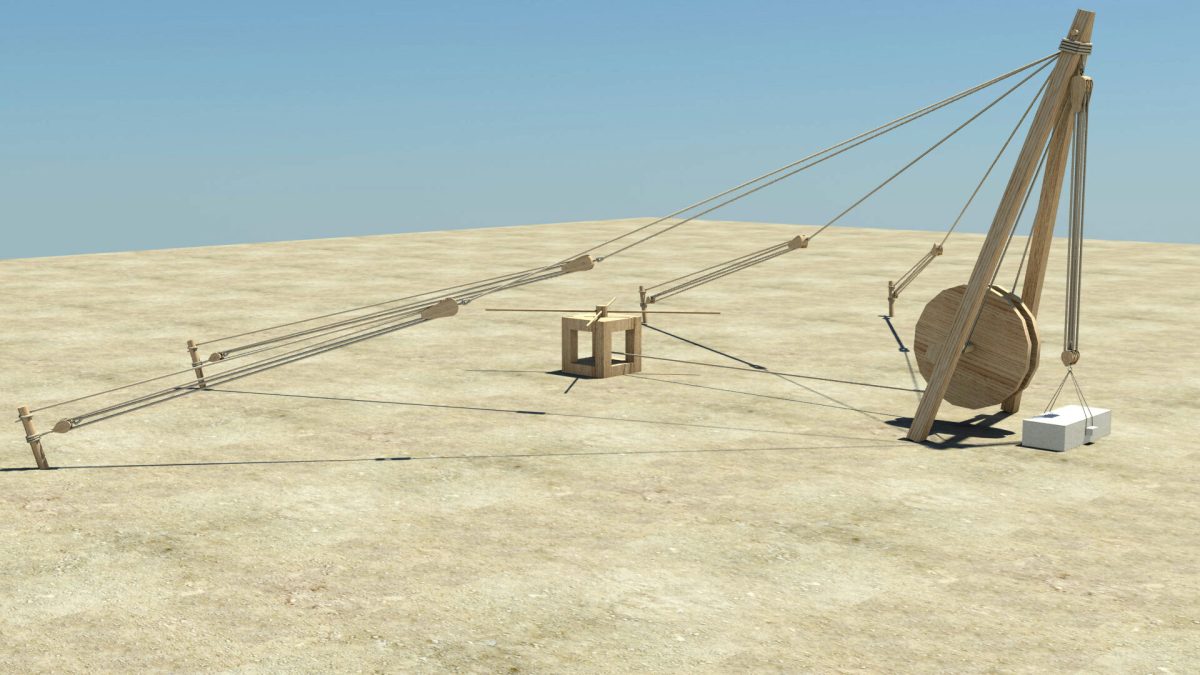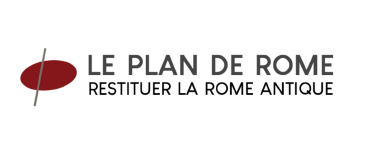Introduction
At the University of Caen Normandy (France), the expression Plan de Rome refers to two complementary objects. The first is a large plaster model of ancient Rome, created by Paul Bigot in the early twentieth century. Its name follows the tradition of relief plans, scale models of fortified French cities produced between the seventeenth and nineteenth centuries. The second is an interactive virtual reconstruction of the same city, developed since 1994 by the Research Team in Literatures, Imaginaries and Societies (ERLIS), with support from the Interdisciplinary Center for Virtual Reality (CIREVE). Unique in France, these two objects complement each other from both educational and research perspectives.
Model by Paul Bigot

The Plan de Rome is a plaster model covering approximately 70 m² (11 m by 6 m), created at a scale of 1:400. It represents three-fifths of the city of Rome during the time of Constantine, in the early 4th century CE. Its creator, architect Paul Bigot (born in Orbec in 1870, died in Paris in 1942), who won the Grand Prix de Rome in 1900, devoted most of his life to this reconstruction of the city of Rome.
When a copy was delivered to the Cinquantenaire Museum in Brussels in 1936, Paul Bigot’s model was praised by renowned historians, such as André Piganiol and Jérôme Carcopino:
Rythme. Publication de la Société Centrale d’Architecture de Belgique, 9, 1, 1951, p. 22, J. Carcopino : “Paul Bigot, indifferent to material profits – which he never sought nor obtained – and even to honors – which came to him unbidden – was happy, deeply happy, with that kind of happiness expressed in his subtle smile: a happiness known only to those whose mature years have fulfilled the dreams of their youth, and to those who, too proud to be vain, are aware of their worth and believe in the enduring destiny of their work”.
Rythme. Publication de la Société Centrale d’Architecture de Belgique, 9, 1, 1951, p. 23, A. Piganiol : “It is not enough to recognize in Bigot the knowledge and intuition of a highly competent archaeologist… [his work] is not merely an antiquarian reconstruction, but the realization of an artist’s dream”.
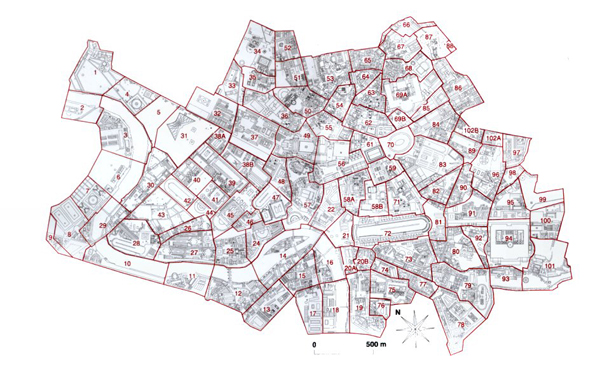
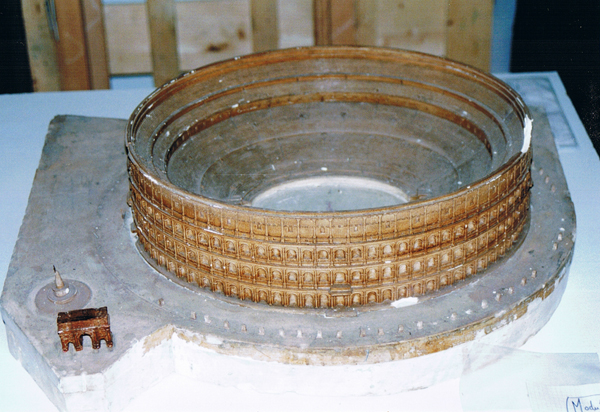
Each module could be made up of different parts as needed to facilitate casting and updates.
Far more than just a work of art, Paul Bigot’s model is a true product of scientific research. It integrates with incredible precision the full extent of the topographical knowledge about ancient Rome available at the time of its creation. Paul Bigot naturally worked from all available ancient sources (textual, iconographic, and archaeological), and his trained eye as an architect-archaeologist allowed him to synthesize this vast body of information, the complexity of which is still appreciated today. One of the best pieces of evidence of the accuracy of his work is the comparison between Bigot’s model and a satellite image of the modern city, where the main buildings of ancient Rome can be clearly identified. Both in the placement of the buildings and in the layout of the streets, the architect achieved a remarkable result, combining scientific rigor with an aesthetic vision.
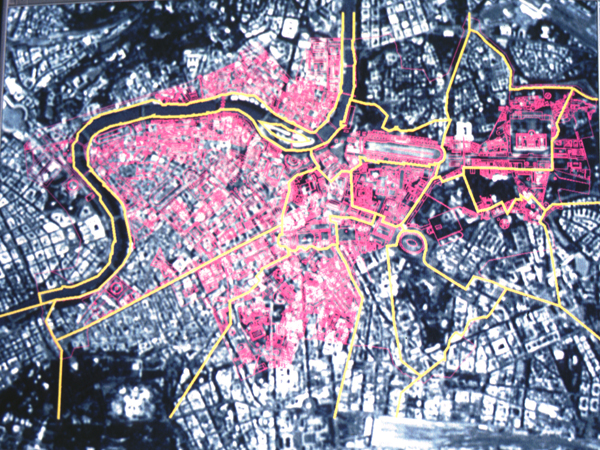
During restoration work carried out in 1995, the corrections made to the modules over the years became clearly visible. It is estimated that approximately 29 modules underwent changes in their layout, reflecting advances in the knowledge of the Eternal City.
Bequeathed to the University of Caen and classified as a historic monument, the model of Rome was initially housed in the basement of the Law building, where it was first put on display.
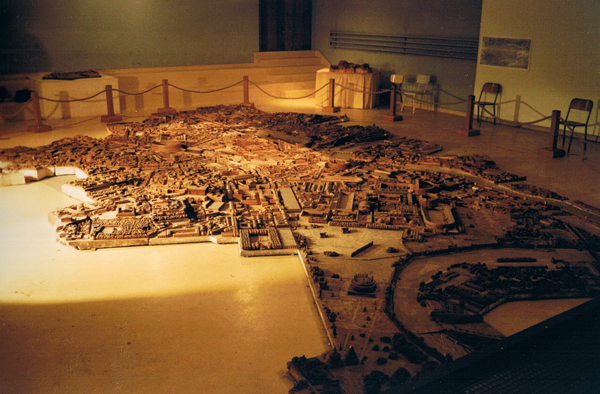
After the construction in 1995 of the Maison de la Recherche en Sciences Humaines (Center for Research in Human Sciences) at the University of Caen, the model was restored, relocated, and exhibited there, where it became a symbol. Thanks to the virtual reconstruction work, it now goes beyond the physical walls to be accessible to the entire world.
Virtual Plan de Rome
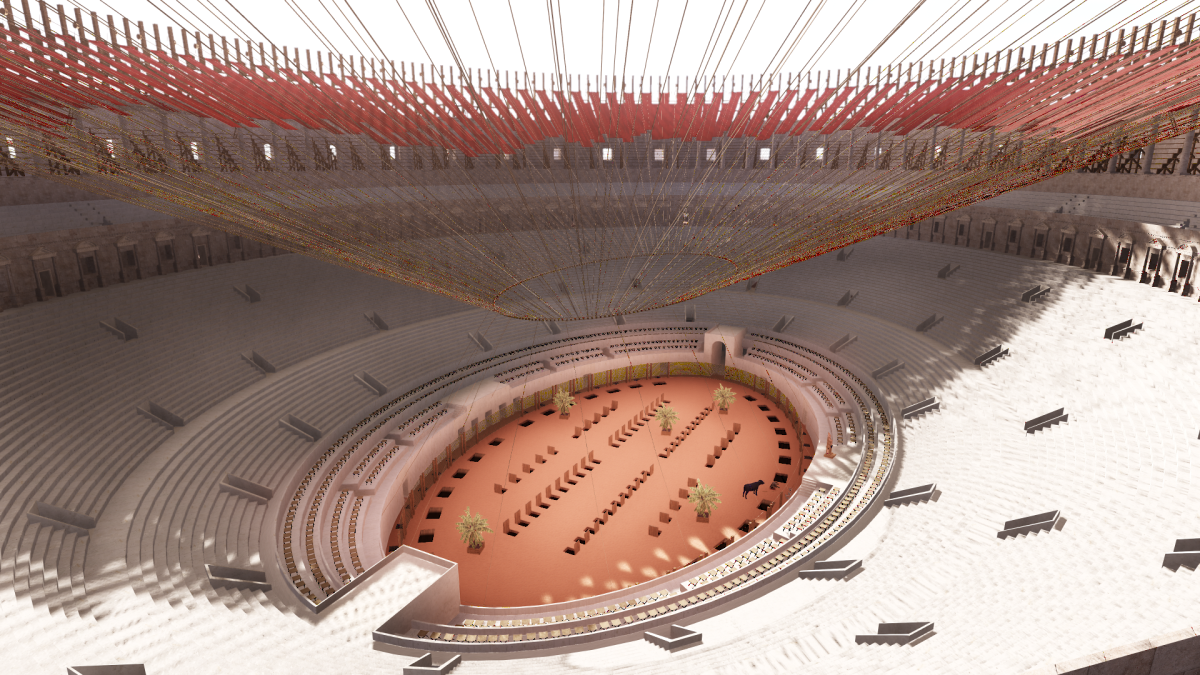
The virtual Plan de Rome is an interactive digital model representing Rome at the same period as Paul Bigot’s physical model. The ultimate goal is to recreate all the exteriors (streets, residences, shops, public monuments, water supply networks, etc.) as well as parts of the interiors (the most well-known public buildings and selected examples of houses and shops). Mechanical systems are also reconstructed. The collection of textual, archaeological, and iconographic sources used for these reconstructions is linked to the digital model.
Initiated around Paul Bigot’s model, the Plan de Rome project is both a research initiative and a tool for disseminating scientific knowledge.
The overall goal of the work is to make ancient sources increasingly accessible to a wide audience by using innovative technologies. The research project is articulated around two main areas:
- Architecture and urbanism of Ancient Rome
- Machines of the Antiquity
The “Plan de Rome” project is one of the four research axes of ERLIS (Research Team on Literatures, Imaginaries, and Societies – UR 4254).
The dissemination of scientific knowledge is carried out through several tools:
- Guided tours of the model itself.
- A series of lectures, the Nocturnes du Plan de Rome, all recorded and broadcast.
- Applications for PC, tablets, or smartphones, such as Roma in tabula.
All these activities are conducted in connection with the “Science with and for Society” label awarded to the university.
Nocturnes du Plan de Rome

The Plan de Rome project has both a scientific research perspective and an educational and knowledge dissemination component. It is in this context that the idea for the Nocturnes du Plan de Rome was born in 2007. The ambition was not only to address researchers and students but also to attract a diverse public to the University, sharing with them the results of the latest research conducted in the laboratory. The lectures consist of two parts: an introduction to the chosen topic and an interactive tour of the corresponding section of the virtual model of ancient Rome. The Nocturnes are broadcast live (YouTube), recorded, and most of them have English subtitles. New topics are covered each year.
Machines of Antiquity
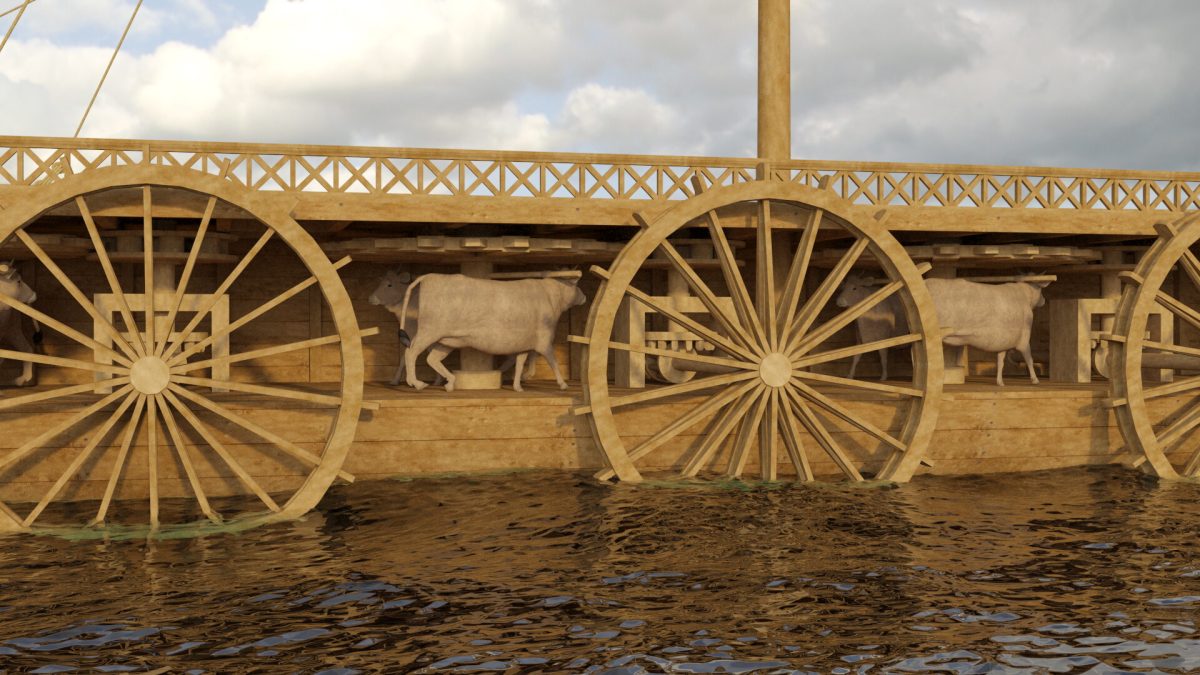
In continuity with its work of creating a virtual model of Rome at the end of the Imperial period, the “Plan de Rome” team is conducting research on the mechanical systems used in Antiquity. The goal is to create virtual models of these systems, which are generally very ingenious and scientifically documented, and to use them to advance knowledge in both research and teaching.
We know little about ancient machines due to the limited information available. Our knowledge of Greco-Roman technology and engineering comes from three main sources:
Archaeological discoveries: Complete machines are rarely found, as most of their wooden components have been lost over time.
Texts: The literature on technology consists of a limited number of writings, which may have been distorted over the centuries. Other literary references can also be used.
Iconography: Although the interpretation of images is often uncertain, this source remains essential.
Virtual reconstruction can provide an additional contribution to conventional media (texts and 2D images) in three different ways:
- Objects or machines can be viewed from different angles, and they can also be disassembled if necessary. Furthermore, transparency allows the visualization of components that would otherwise remain hidden.
- For demonstration purposes, it is possible to simulate the machines in operation.
- Several hypotheses concerning the reconstruction can be tested, including the study of feasibility, efficiency, and functionality of the machines.
